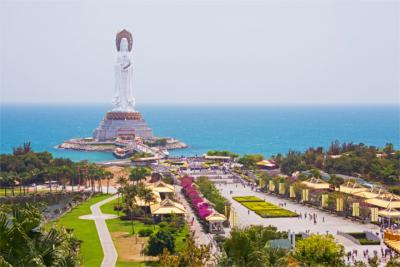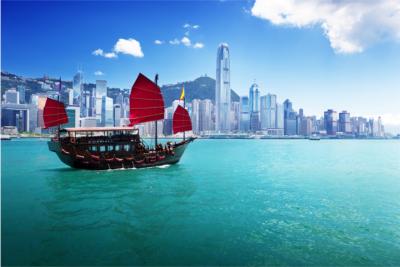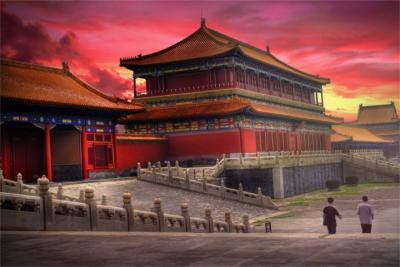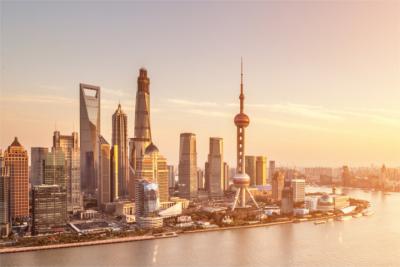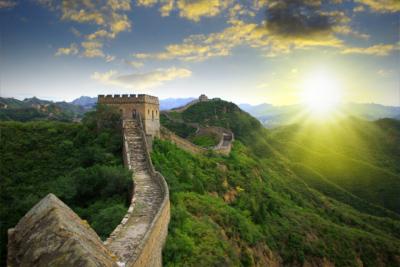Travel Offers
Travelmyne Featureprint
Distance
China - Far Eastern Culture in the Middle Kingdom
The Great Wall of China, the Forbidden City, the Terracotta Army - all these are Chinese landmarks. Distinctive karst mountains, vast terraced fields and unspoiled glaciers meet the modern megacities Shanghai, Hong Kong and Beijing.
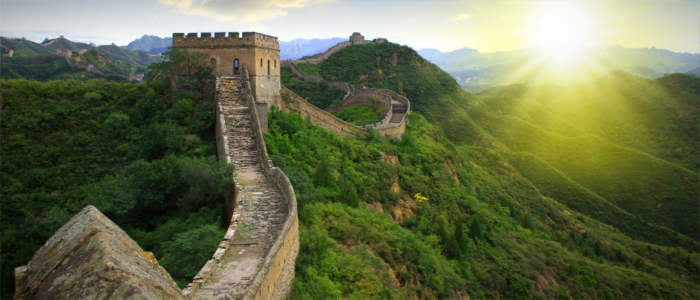
Geography - A superlative country
The People's Republic of China is the third biggest and the most densely populated state on earth. Over 1.3 billion people live in the 22 provinces, five autonomous regions and four direct-controlled cities. Furthermore, there are the two special administrative regions Macau and Hong Kong. China considers Taiwan a "separatist province" of the state. Most people live in the metropolis Shanghai, in the capital Beijing and in Guangzhou. The powerful country borders on 14 different neighbouring countries: Mongolia and Russia in the north, North Korea in the east, Vietnam, Laos, Myanmar, India, Bhutan and Nepal in the south as well as Pakistan, Afghanistan, Tajikistan, Kyrgyzstan and Kazakhstan in the west. China's climate is as varied as its landscape and there are 18 different climate zones. Generally, the climate from west to north-east can be classified as continental. The south is dominated by tropical to subtropical climate, while there is alpine climate in the mountainous regions of Tibet.
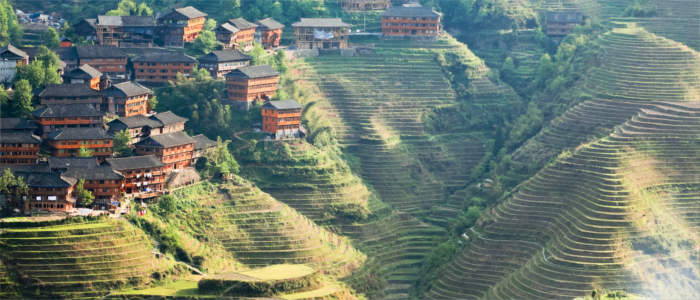
Nature - Exotic landscapes of all kinds
The extremely vast and diverse nature can also only be described in broad outline. There are three great areas. China's east is characterised by a densely populated flood plain with juicy river deltas. The greatest rivers Yangtze (6,300 km) and Yellow River (5,464 km) constitute a part of the lush water region. China has several magical lakes and waterfalls, for example the gigantic saltwater lake Qinghai, the colourful Kanas Lake and the great crater lake Tianchi. About 36 percent of the country are farmland. Plants like rice are grown on gigantic terraced fields. In the central west you see the plateau with the first mountain ranges. About 9 percent of the country are covered in different types of forests. Besides spruce and cottonwood forests, there are also bamboo forests and several exciting rainforest regions. The west is crossed by the Chinese high mountain ranges. The world's highest peaks are located here such as the Mount Everest (8,848 m) in the Himalayas and the Holy Mountain (7,724 m) in the Kunlun Mountains. All Chinese glaciers taken together cover an area of almost 60,000 km². The greatest one among them is the Tomur Glacier, which is located at a height of about 7,400 metres. Most people are not aware of the fact that almost a fifth of China's area are deserts. One of the largest ones is the Badain Jaran Desert. The great sandy Taklamakan Desert and the singing sand dunes in Gansu are particularly beautiful. China's coast at the Yellow Sea as well as at the East and South China Sea are about 14,500 kilometres long altogether. China is the country with the third most species of plants. Peonies, rhododendrons and over 500 types of bamboo are native to the country. The range of rare animal species is equally exotic and diverse. The popular panda, the South China tiger, cranes, pheasants and the Chinese river dolphin can be watched in many parts of the country.
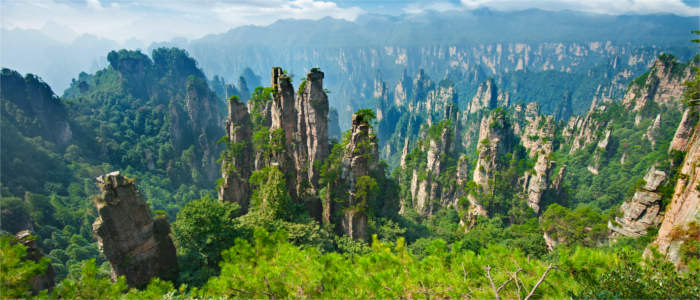
Natural sights - China's karst mountains
More than a dozen of the Chinese natural regions have been declared World Natural Heritage by the UNESCO. Every single one of them has its own special appeal. The Huangshan in the Anhui province, the breathtaking mountainous landscape in the Lushan National Park in Jiangxi and the vast Longshen Rice Terrace are only a few of the most beautiful sights. The karst formations along Li River in the Guangxi province look like a painting. Another Chinese landmark is the Three Gorges Dam in Sichuan at the Yangtze River. Outstanding landscape areas are the Yuyuan Garden in Shanghai with the architecture of the Ming Dynasty and the Classical Gardens of Suzhou. The latter are especially worth a visit in spring and in the colourful autumn months.
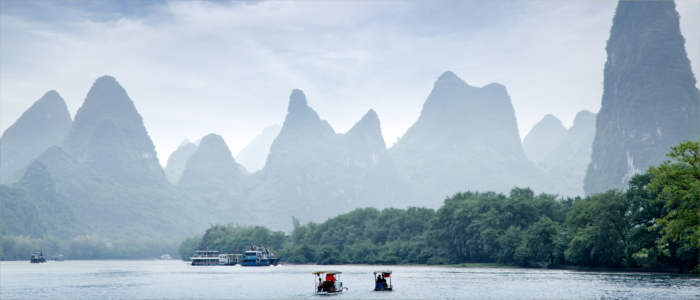
Culture - The ups and downs in the land of smiles
Written records of China date back over 3,500 years and make this culture one of the oldest civilisations in human history. The Chinese Empire was founded in 221. An important break in Chinese history is the invasion of Genghis Khan in 1211. The first traveller who reported on China's wonders was Marco Polo. He already travelled the country in the 13th century. The fall of the Ming Dynasty in1644, the Opium Wars in the 19th century and the violent suppression of the revolt on the Tiananmen Square in 1989 influenced the public opinion the world had of China and its politics. As the country has more inhabitants than Russia, North America and Europe taken together, its government enforced a one-child policy. The most common religion is the Buddhism. Therefore, it is not surprising that China holds the world's greatest Buddha statue. This significant pilgrimage destination measures unbelievable 71 metres and is located in Leshan in the province of Sichuan. China is known as the land of smiles. This name is connected to the mentality of the Chinese. It often seems strange to people of the Western world that Chinese people even smile in dramatic situations. They do this to prevent escalations. As in other Asian countries, it is important to save face. Public criticism against people, situations or even politics is taboo and may be punished.
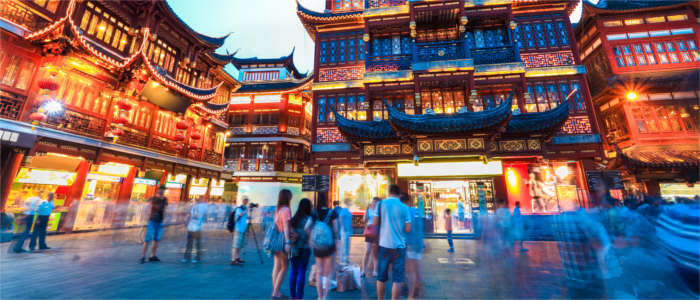
Cultural sights - The masters of Chinese architecture
No other country on earth holds as many UNESCO World Cultural Heritage sites as China. The country offers an abundance of cultural sights. With over 12 million visitors per year, the Great Wall of China (6,350 m) is a masterpiece of the human art of construction. The Temple of Heaven in Beijing was built during the Ming Dynasty and is visited just as frequently. For over 500 years no ordinary mortal was allowed to visit the Forbidden City in Beijing. Nowadays, the imperial palace is one of country's tourist hotspots. A particularly magnificent building is the white Old Summer Palace (Yuan Mingyuan) near Beijing. The stairs which lead up to the sacred mountain Tai Shan in Shangdong count 6,660 steps. This sanctuary of Taoism is one of the most important pilgrimage destinations. 700,000 Chinese people worked on the construction of the 7,278-person Terracotta Army in Xi'an for over 38 years. Examples of modern Chinese landmarks are the Oriental Pearl Tower and the Jin Mao Tower in Shanghai.
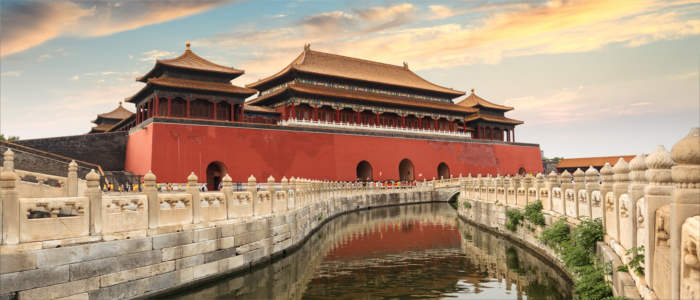
Experience - Enjoying the Chinese cuisine
The Chinese cuisine is popular all over the world - although the Western versions do not have much in common with the original Chinese recipes. The characteristic Chinese food culture has three meals. You have jiaozi (dumplings) for breakfast and warm dishes like Kung Pao chicken with peanuts or mapo tofu for lunch and dinner. A bowl of rice and chopsticks are part of every meal. The noisy munching and slurping at the table takes getting used to but it is an expression of good taste. The world-famous Peking duck is mainly served in special restaurants in Beijing. Great destinations for shopping tours are the Temple Street Night Market in Hong Kong, the great Super Brand shopping centre in Shanghai or the world's largest Sunday market in Kashgar. Typical souvenirs are clothes made of cashmere, jade jewellery, Chinese hand-held fans, calligraphy and tea. The party miles in Beijing and Shanghai mostly cater to tourism and are quite expensive. Visitors have to be careful when it comes to gambling. Except for Macau, gambling is strictly forbidden in the whole of China.
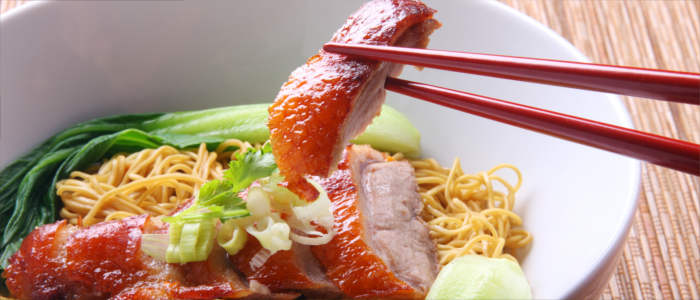
Activities - Rickshaw and martial art in the Far East
Visitors experience Beijing's hutongs (alleys) in an authentic way on a cycle rickshaw. You can also go on rafting and kayaking tours on the rivers and the artificial Thousand Lakes Island. Bathing holidays in China are not very common yet but definitely possible. Holidaymakers find relaxation and white beaches on Hainan Island, which is also called the "Hawaii of the east". Winter sports are also still an insider tip. You find excellent skiing areas around Beijing in Nanshan. The Snowboard Park in this region is also worth mentioning. The Yabuli Ski Resort is the greatest skiing region and is opened until April because of its convenient position. Fans of Asian martial art should keep their eyes open in both the cities and the rural regions. There are many Europeans who take part the martial art workshops and courses in China.
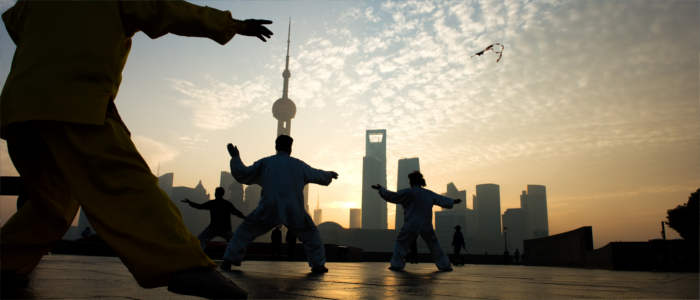
Information
Travellers need a valid visa for entering China. Furthermore, tourists should check the current security situation. Although China is generally classed as a safe travel destination, there are regions in which you have to take special precautionary measures. Visitors who travel with babies or toddlers should make sure that their children get a vaccination against rotaviruses. Dengue fever and malaria also occur in several Chinese regions.
The Middle Kingdom is still one of the greatest mysteries on earth. Lovers of culture and adventurers will enjoy the abundance of sights and the impressive sceneries.


